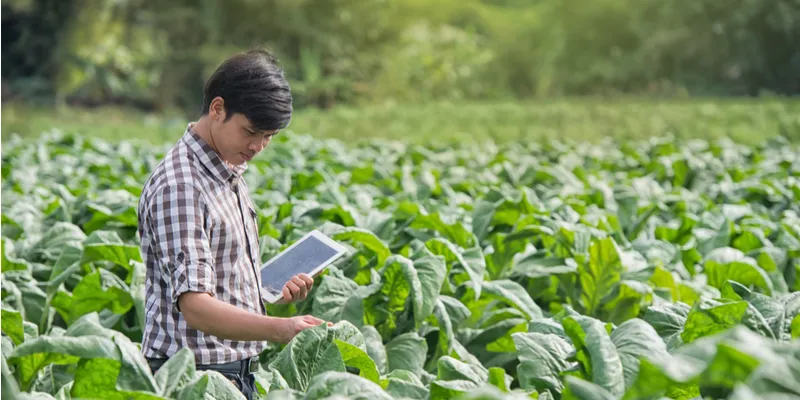The digital revolution sweeping the agriculture sector in India, and everywhere
In this new era, the farmer can use technology to gain control of the changing dynamics and leverage market insight without relying on traders.

Farming has come a long way since the first farms were created in Mesopotamia centuries ago, but trading and supply of agriculture has not kept pace. As farmers focused on production, grain traders focused on maximising profitability through matching supply and demand in world markets. The technology was built in the form of Commodity Trade Risk Management (CTRM) systems to help traders analyse markets, complete transactions, and manage risk and compliance.
Over the last few years, with the birth of SaaS and cloud technologies, increase in the number of discerning consumers, and unprecedented weather events, farmers accessed new technology and tools to maximise their profits without relying purely on large grain trading companies to sell their produce.
This not only disrupted the value chain completely but also created entirely new market forces for all the players – from farmers to trading houses and purchasing departments. However, the CTRM technology the industry relied on remained monolithic, inflexible and expensive, forcing players to work with outdated spreadsheets and incremental CTRM or ERP “innovations”.
There are basically three key forces that are reshaping the global agriculture industry:
Insights through new technology
In the past, agriculture trading companies would buy farmers’ crops during a harvest season and store the crops to sell for a profit when markets appreciated. Farmers relied on traders because they did not have the inside knowledge traders had. With the advent of readily available and inexpensive real-time data, farmers now have access to insight they never had before and have gained leverage over traders. Technology can give farmers specific insights into predicting weather patterns, optimising crops inputs, identifying crop diseases, and helping farmers reach markets directly.
Changing consumer preferences
Rising concerns about food safety have changed the way consumers purchase food and governments regulate food labelling. Today’s savvy consumers want proof of the history of the food they consume. Where was it grown? Were pesticides used? Is it non-GMO? Consumers want to know the providence of food from farm to fork, and this means producers, traders and purchasing managers need to trace the origin from farm to fork. This puts the power back into the hands of the farmer.
Climate change erodes arable land
Perhaps the greatest challenge for farmers today is climate change and its impact on available farmland and freshwater. As global temperatures rise, and weather patterns change, the amount of land and water available for farming is declining. Farmers cannot create more land, so they need to find innovative ways to increase crop yield while conserving water and other resources.
In this new era, the farmer can use technology to gain control of the changing dynamics and leverage market insight without relying on traders. One of the ways governments, authorities and agriculture trading companies can help farmers is by providing access to different value-add services such as:
Data-powered farming
Trading companies and governments with data from multiple farms and regions can aggregate this data and apply advanced analytics to provide farmers with insight across regions, crops, and farms.
Connected portals
Portals provide real-time communication and instant responses to queries to enable faster negotiations, eliminating cumbersome paperwork and making the entire process easier while enabling farmers to get the best deal for their produce.
Artificial intelligence
New technology, such as IoT sensors and blockchain, enables farmers to trace every event from planting to harvesting to distribution in a blockchain and provide complete transparency to all interested parties.
Precision farming
Analysing historical data with real-time data from IoT sensors, weather feeds, etc., farmers can determine the right time to plant and harvest and the optimal mix of fertilizer, water, etc. to maximise yield.
Agriculture is evolving, with one boot firmly planted in the mud and one hand holding a mobile phone. The farmer is indeed at the epicentre of a digital agriculture revolution.
(Disclaimer: The views and opinions expressed in this article are those of the author and do not necessarily reflect the views of YourStory.)







